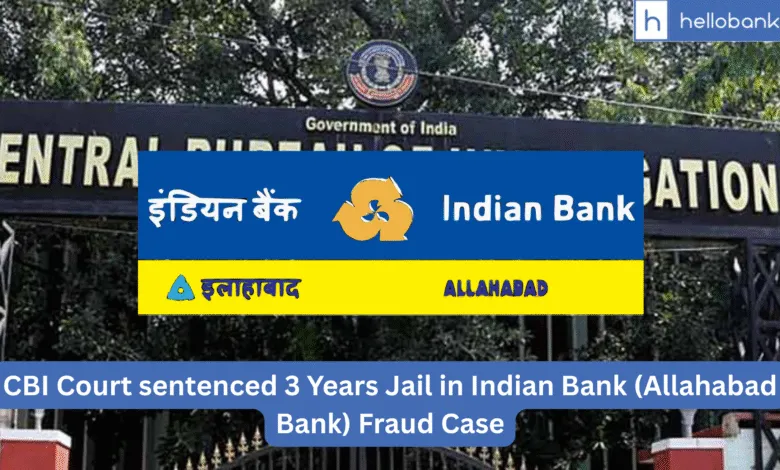CBI Court sentenced Individuals to 3 Years Jail in Indian Bank (Allahabad Bank) Fraud Case

| Get instant news updates: Click here to join our Whatsapp Group |
The CBI Court in Patna, has sentenced two people in connection with a long-pending bank fraud case. The court awarded three years of rigorous imprisonment (RI) and a fine of ₹7 lakh to Rana Ashok Kumar Singh, also known as Dina Singh, and 1.5 years of rigorous imprisonment (RI) with a fine of ₹17,500 to Anil Kumar Srivastava.
The case dates back to 7 February 1996, when the CBI registered an FIR based on a complaint by the Manager of Allahabad Bank (now merged with Indian Bank), Exhibition Road, Patna. The complaint alleged that Dina Singh deliberately cheated the bank by taking a loan of ₹2.6 lakh in 1991 against forged National Savings Certificates (NSCs) worth ₹3.59 lakh.
NSC is a savings scheme launched by the Government of India to encourage small savings and investment among people. Under the scheme, an individual can deposit a minimum of ₹1000/- and thereafter in multiple of ₹100/- with no maximum deposit limit for 5-year maturity period.
The NSC holder can take loan from Bank. NSC is a government-backed saving instrument, so it is considered safe collateral by banks. Investors can pledge their NSC certificates to the bank and easily take a loan.
During the investigation, it was revealed that Dina Singh, along with others, had created fake NSCs in collusion with the then Branch Manager of Allahabad Bank, Shashi Bhushan Pandey. With the help of an employee working in a printing press, they prepared these forged certificates. In fact, when CBI searched the residence of Dina Singh, they recovered a printing machine that was allegedly used to print fake serial numbers on NSCs.
This clearly indicates that the fraud was not a random act but a carefully planned conspiracy. The accused had made proper arrangements and even used specialized tools to carry out the scam. The recovery of a printing machine from the residence of the main accused shows that the scam was executed in an organized manner. It also highlights how deeply the accused were involved in manipulating the banking system. Moreover, the case reflects serious loopholes in the verification process of NSCs at that time, which made it easier for the accused to cheat the bank.
The fraudulent loan proposal was also routed through the Patna Zonal Office to the Calcutta Headquarters, which further highlighted irregularities in the process. The court, after examining the evidence, convicted the accused and announced the punishment.
